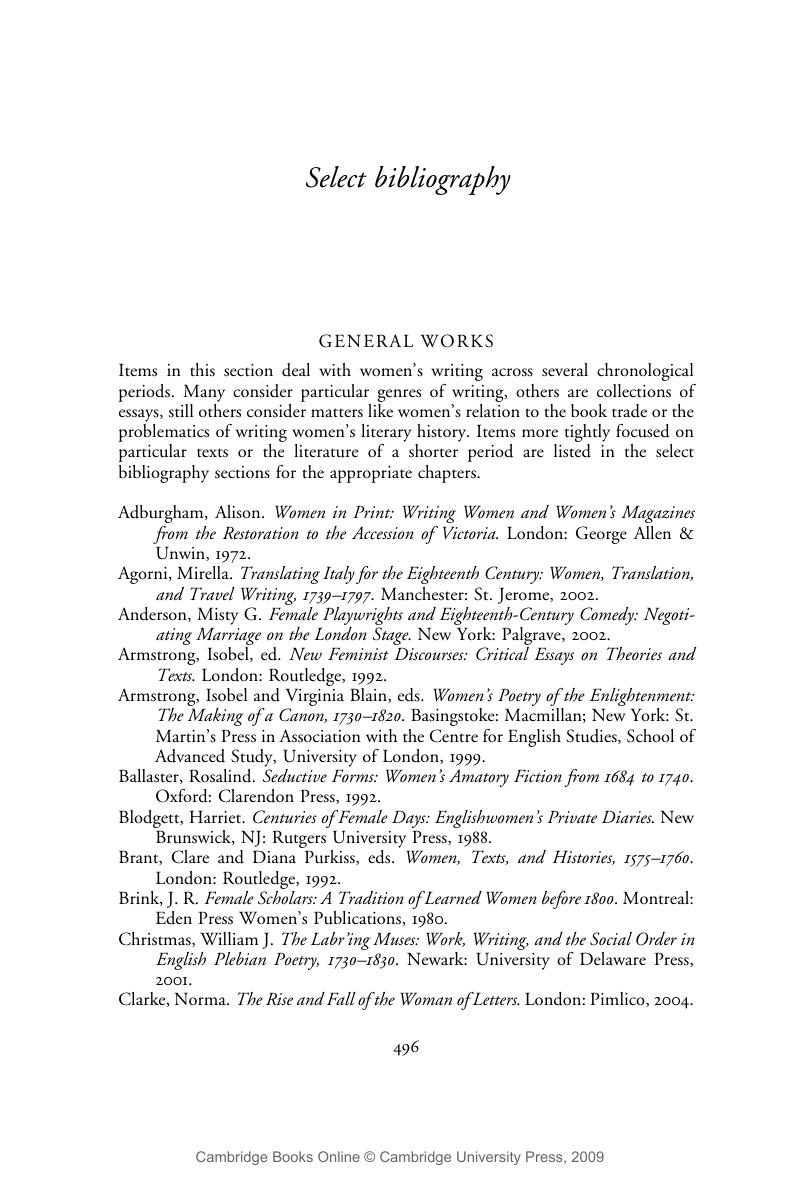Book contents
- Frontmatter
- Contents
- Acknowledgments
- Introduction
- 1 Public women: the Restoration to the death of Aphra Behn, 1660–1689
- 2 Partisans of virtue and religion, 1689–1702
- 3 Politics, gallantry, and ladies in the reign of Queen Anne, 1702–1714
- 4 Battle joined, 1715–1737
- 5 Women as members of the literary family, 1737–1756
- 6 Bluestockings and sentimental writers, 1756–1776
- 7 Romance and comedy, 1777–1789
- Notes
- Recommended modern editions
- Select bibliography
- Index
- References
Select bibliography
Published online by Cambridge University Press: 06 November 2009
- Frontmatter
- Contents
- Acknowledgments
- Introduction
- 1 Public women: the Restoration to the death of Aphra Behn, 1660–1689
- 2 Partisans of virtue and religion, 1689–1702
- 3 Politics, gallantry, and ladies in the reign of Queen Anne, 1702–1714
- 4 Battle joined, 1715–1737
- 5 Women as members of the literary family, 1737–1756
- 6 Bluestockings and sentimental writers, 1756–1776
- 7 Romance and comedy, 1777–1789
- Notes
- Recommended modern editions
- Select bibliography
- Index
- References
Summary

- Type
- Chapter
- Information
- A Literary History of Women's Writing in Britain, 1660–1789 , pp. 496 - 512Publisher: Cambridge University PressPrint publication year: 2006



